Abstract 7/2016
Table of content
Alexander Rossolov – Demand modelling for public transport service based on variation of needs in travel (articl in English)
Balázs Horváth, Viktor Nagy – Zone estimation with cluster analysis of public transport stops (articl in English)
Renata Żochowska, Aleksander Sobota, Grzegorz Karoń – Models of trip generation in urban area on the example of Bielsko-Biala
Paulina Matusz, Grzegorz Rudecki, Jacek Oskarbski, Kazimierz Jamroz – Issues on modeling of relationships: speed – density – volume in the urban traffic
Jarosław Szustek – Microscopic modelling in the context of tram priority algorithms testing
Andrzej Maćkowiak, Jacek Thiem – Modeling of bus rapid transit systems – case study
Marta Gągorowska, Piotr Jan Kojałowicz, Rafał Kucharski – Mixed-mode cost matrix
Abstracts
Alexander Rossolov
Demand modelling for public transport service based on variation of needs in travel (articl in English)
Abstract: The complex approach to O-D matrix modelling based on stochastic hypotheses about demand generation for public transport service is developed. Using combinatorial analysis the demand variation model has been worked up and the possible quantity of O-D matrixes has been estimated. It has been developed the methods of O-D matrixes modelling using step-by-step simulation and Monte Carlo method.
Key words: O-D matrix, passenger trip, demand model
Balázs Horváth, Viktor Nagy
Zone estimation with cluster analysis of public transport stops (articl in English)
Abstract: Nowadays the data sets are spreading continually, generated by different devices and systems. The public transport is also not an exception in this. The modern GPS based tracking systems and the electronic tickets are producing lot of data, and we could use them for improving the service level. In the right case, these data are storing, and the service suppliers are not dealing with its information content, but, on the other hand, maybe they are just deleting these, in the interest of the avoidance of digital space occupancy. However, these data are processable with the modern devices and methods, and we can use them for information obtaining. Thanks to the spread of data mining, these tools are not appearing only in marketing research but in the most various kind of scientific area too, and they are advertising a new scientific revolution. Although the importance of these data sources is essential it is not widespread in general in transport planning, only in some specific areas [1] as described by Csiszár et al. This article presents possible application of the digital raw materials, taking the public transport passengers boarding information as base. We created a three step method which could be useful in automatic zone shaping or to supervise the manually created zone borders. It is also able to give help in land-usage examinations. The procedure is effective in making traveling chains from smart card data and in creation of origin destination matrix from check-in data. In this article we are showing how the zone distribution is possible with the assistance of different distance measurement methods and clustering procedures, and we are presenting the results on the example of a selected city.
Key words: public transport, big data, time series, similarity matrix, clustering
Renata Żochowska, Aleksander Sobota, Grzegorz Karoń
Models of trip generation in urban area on the example of Bielsko-Biala
Abstract: The first stage of the four-step travel demand model requires building of trip generation model. It covers identification of factors influencing travel demand and determination of their impact on the number of trips generated by the objects and areas located in the city. Proper conducting of this process is crucial for the further stages of modeling and thus for the quality of the whole constructed transportation model. The article presents an overview of methods for building models to generate internal traffic in urban area. As an essential criterion for the classification the used mathematical technique for mapping the process of trip generation has been adopted. The practical part of the article constitutes a structure of models of trip generation developed for the development of a transportation model of Bielsko-Biala.
Key words: trip generation models, factors influencing travel demand, transportation needs
Paulina Matusz, Grzegorz Rudecki, Jacek Oskarbski, Kazimierz Jamroz
Issues on modeling of relationships: speed – density – volume in the urban traffic
Abstract: First model describing relationships: speed-density-volume has been created 80 years ago. Since this very moment scientists all over the world have been studying on their own road traffic models which would describe fundamental diagram comprehensively. Researches on the selection of suitable parameters – necessary for development of the model – have been conducted mainly on the highways. The issue discussed in this article refers to insufficient number of studies on the relationships: speed-density-volume in the urban environment in Poland. The article is aimed to evaluate the possibilities of implementation of the existing traffic models on the example of streets’ network of the Tricity (Trójmiasto) together with development of authors’ methodology of researches adequate to existing tools. An attempt to construct models for intermittent traffic for better understanding of traffic lights and other obstructions in the urban environment impact on the fundamental diagram has been undertaken.
Key words: road traffic, urban traffic, road traffic models, theory, theory of traffic flows
Jarosław Szustek
Microscopic modelling in the context of tram priority algorithms testing
Abstract: The concept of tramway priority has a wide scope, therefore it is difficult to estimate the optimal level of such a priority when considering specific cases. The paper proposes to use Vissim microscopic modelling for this purpose. Procedures for testing, conformation and effectivness analyses in microsimulation where proposed basing on actual experience acquired during tramway prioritetisation in Warsaw. The paper summary contains recommendations concerning a wider scope of applications for microscopic modelling in signal timing designs.
Keywords: microsimulation, actuated signal timing, tram priority
Andrzej Maćkowiak, Jacek Thiem
Modeling of bus rapid transit systems – case study
Abstract: Bus Rapid Transit (BRT) systems are still poorly recognized in Poland, although successful in the world. It is incomprehensible specially in the referrence to the conducted analysis (e.g. in Płock, Poznań) which give promising results. Authors present a specific approach to modelling and planning the BRT system on the basis of listed examples. Implementations and methods of projection of the BRT system in the model of supply and demand have been presented. Authors attempt to explain reasons of high rates of economic analysis results generated by the planned BRT systems. Deliberations are illustrated with examples of operating BRT systems in the world.
Key words: passenger transport, Bus Rapid Transit (BRT), traffic model
Marta Gągorowska, Piotr Jan Kojałowicz, Rafał Kucharski
Mixed-mode cost matrix
Abstract: The article presents an example of cost matrix which is used in the trip distribution in modelling process. Authors present how changes in the transport network affect connection impedance. The article also explains why the matrix should contain not one but several transportation modes together. The article describes some methods of the matrix construction but only one suggested which seems to be the most appropriate is presented.
Key words: cost matrix, trip distribution, demand model

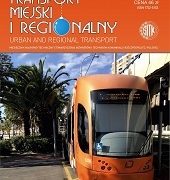
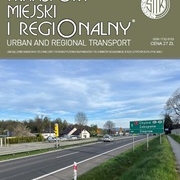 SITK
SITK 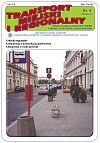 SITK RP
SITK RP 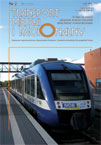 SITK RP
SITK RP 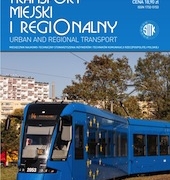 SITK RP
SITK RP 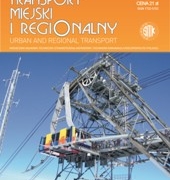 SITK RP
SITK RP 
 SITK RP
SITK RP SITK RP
SITK RP